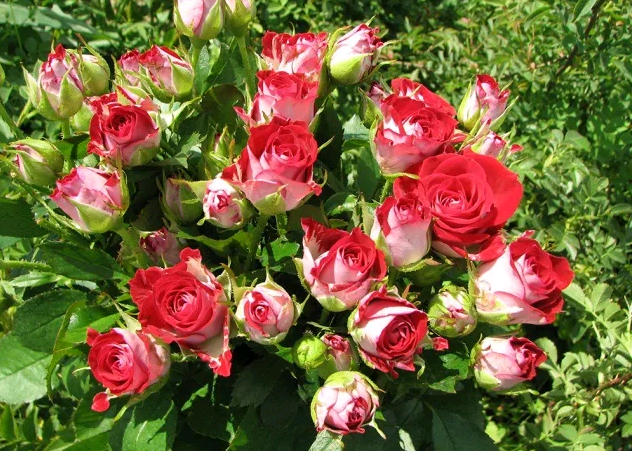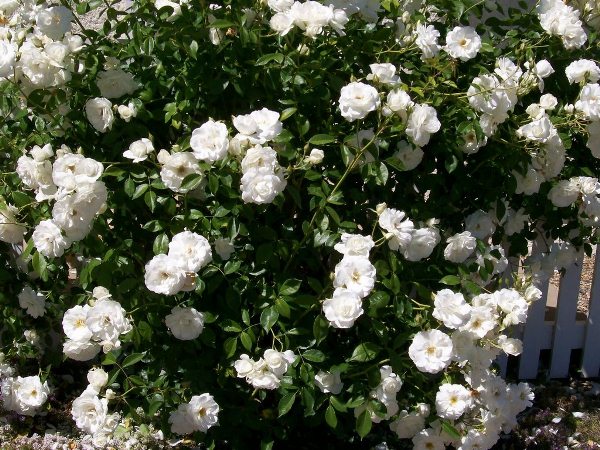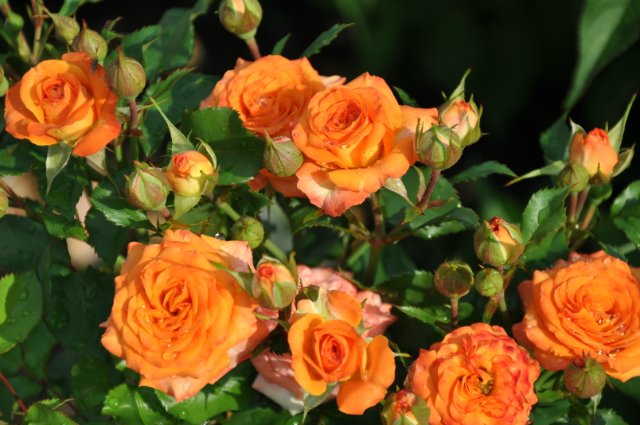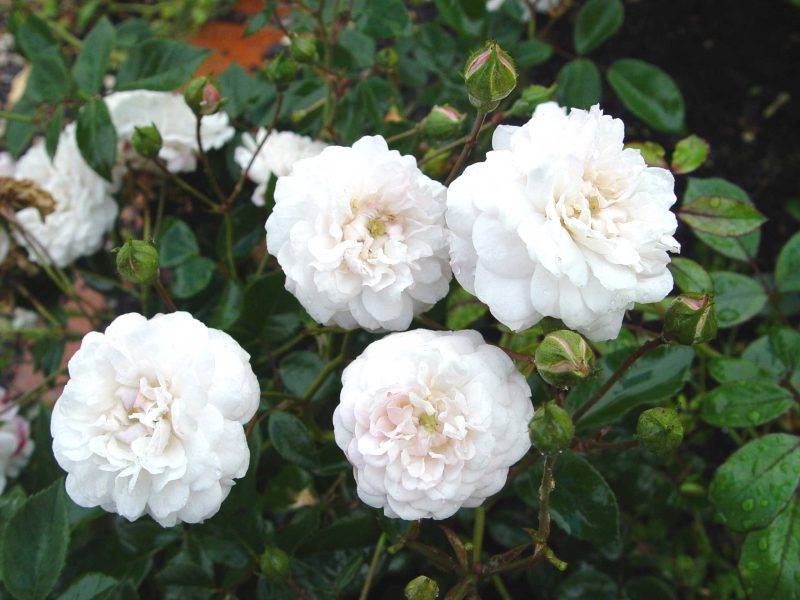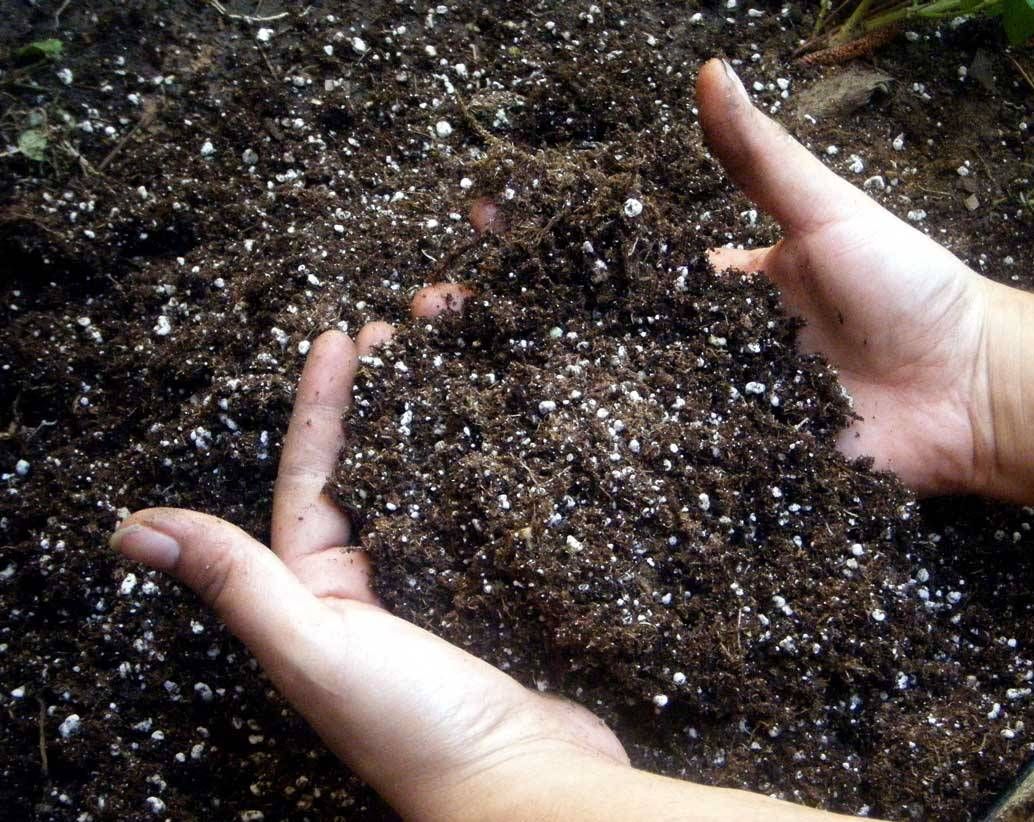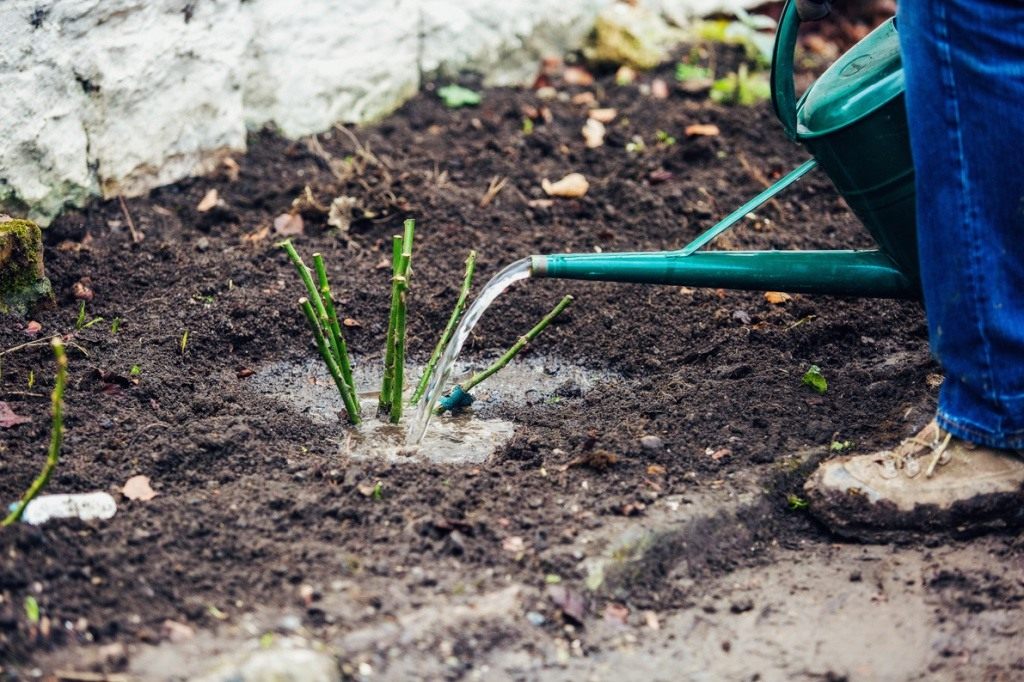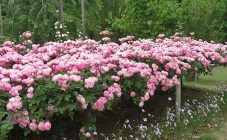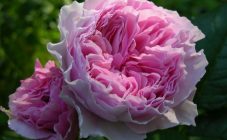Content:
For more than a decade, small roses have been very popular among flower lovers. This variety is universal: such crumbs can be grown both in pots and in flower beds in the garden. For those who have not yet come across miniature roses, it will be useful to know their most popular varieties and the features of caring for them.
Dwarf roses
The birthplace of miniature roses is China. Now breeders have bred more than 100 varieties. All of them are distinguished by beautiful small flowers of various shades that exude a subtle aroma or do not smell at all.
Benefits of dwarf roses for decorating gardens and loggias:
- The bushes are compact, up to 40 centimeters in height, the stems do not fall to the ground.
- Most varieties are frost-resistant, so they are suitable for decorating a flower bed as a perennial.
- Flowering lasts from May until frost, old buds are constantly replaced by new ones.
- Flowers are miniature, varied in shape and color.
- Among dwarf roses, there are varieties with both one flower on the stem and many, which allows them to perfectly fit into landscape design.
- Climbing and creeping species of mini roses have long (up to 5 meters) shoots, flowers are small, up to 4 centimeters in diameter, but almost the entire bush is strewn with them. The flowering period depends on the selected variety. This is a great option for creating hedges and arches.
Popular varieties of small roses
Small roses are varied in the height of the bush, the length of the shoots, the number of inflorescences. Therefore, the most popular varieties among flower growers can be divided into 3 groups: weaving, mix roses and ground cover.
Intertwining roses
These roses have long, twisting, thin stems that are all strewn with flowers. They are distinguished by unpretentious care, fit perfectly into the design of the garden when creating flowering hedges, walls, arches, and so on. Most popular varieties:
- Pomponella. This rose with small flowers, collected in a brush, got its name from the unusual shape of the flowers. By themselves, they are small in diameter, round and closed, resembling a pompom. They have a delicate aroma, the color range ranges from pink to red. Shoots grow only up to 1.5 meters in diameter. Plants are frost-resistant, will take root well in central Russia as a perennial. They have good immunity to diseases.
- New Down. The most unpretentious variety, which is not afraid of winds, rains and even severe frosts. It blooms profusely and magnificently, the bush itself is very powerful. Small-flowered rose, double flowers, up to 3 centimeters in diameter, with a wonderful delicate aroma, color - pale pink. Plants are resistant to diseases, perfect for central Russia.
- Iceberg Another unpretentious variety is Iceberg. Small snow-white flowers of a standard shape, powerful shoots, up to 1.5 meters high. It takes root in almost any climate.
Roses mix
This is a separate group of low-growing roses, the bushes of which are compact, look like a bouquet, do not exceed 50 centimeters in height. They are the most capricious to care for, most often grown at home, larger varieties are used by designers in landscape compositions.
Most Popular:
- Rose Mini Mix. Many are interested in the variety of the smallest roses, as these tiny roses in flower pots are called, decorating balconies and loggias. The smallest among rosaceae is Mini Mix.This Asian beauty grows in a small bush, 10-15 centimeters in height. The stems have a lot of leaves 10-25 millimeters long, the flowers are small, they cover the plant with a beautiful hat. The color range is varied, but most often there are pink inflorescences. A very moody plant, suitable only for growing in rooms or on closed balconies. Does not like drafts, direct sunlight, dry air. It is demanding in watering, the root system does not tolerate stagnation of water in the soil, it immediately begins to rot, therefore, caring for a Mini Mix rose even at home is very difficult. Propagated, like all dwarf roses, by cuttings. Once every two years, the plant definitely needs to be transplanted into a more spacious container.
- Hummingbird. It is distinguished by its neatness, a bush about 30 centimeters high does not grow in breadth, it is very compactly located in a flower bed. The flowers do not exceed 3 centimeters in diameter, they are double, orange or yellow, but the petals fade very quickly in the sun. Roses of this variety are loved by the southern regions, they are hard to tolerate frosts, therefore, it is best to dig them up for the winter and place them during the rest period in a room with a minimum air temperature of 5 degrees.
- Los Angeles. This perennial extra-class variety is famous for its abundant flowering. Flowers up to 4 centimeters in diameter are collected in beautiful inflorescences. One shoot can have up to 80 pieces of roses, forming large flowering flasks. The height of the bush is on average 35 centimeters. Leaves are dark green, ovoid. They are quite abundantly gaining growth due to woody shoots. They get along well in the southern regions, although with the right shelter they can survive any cold. They are not resistant to diseases, they require protection in the form of special preparations.
Ground cover varieties
These dwarf roses are distinguished by their ability to grow in width, forming large, spreading bushes, similar to a flowering carpet. Main advantages: frost resistance, unpretentiousness and strong aroma.
The most common varieties:
- Rose Flirt. The shoots of this rose are thin, spreading along the ground. The height of the bush is up to 50 centimeters, it grows in width no more than 1.25 m. The flowering is lush, up to 5 centimeters in diameter, the middle of the flower is visible. Rose Flirt refers to an unpretentious flower plant, resistant to many diseases. Suitable for outdoor cultivation. The most suitable areas are the Central and Southern zones of Russia, tolerates frosts down to -23 degrees.
- Degenhart rose. The flower is pale pink at the edges, white inside, a yellow center is visible, has a delicate delicate aroma. In the inflorescence, up to 10 flowers grow, not exceeding 4 centimeters in diameter. The plant is smaller than the Flirt rose. Bushes grow up to 40 centimeters in height and 1 meter in width. Stems are thin, decorated with dense glossy greenery. Winter-hardy, not susceptible to disease, feels great in loamy weakly acidic soils. Plants begin to bloom at the end of May.
- Rose White Cove. A paper-white miniature rose will perfectly take root in a flower bed next to other flowers. Small (about 40 centimeters), refers to ground cover. The leaves are small, the diameter of the flower is up to 5 centimeters, has a light aroma. It is resistant to frost and disease, it takes root well in loamy soils with moderate humidity, does not like swampiness. Gives shoots that can be transplanted as a separate bush.
Caring for miniature roses in the garden
Dwarf roses in the garden are considered an unpretentious culture. The main thing is to find the right place for the flower and provide it with the necessary care.
To properly plant a mini rose on a personal plot, you need to take into account several points:
- You need to plant in a place protected from northern winds, where Rosaceae did not grow before.
- Roses love loamy, slightly acidic soil, although they can get along in any soil that is not too dense and swampy. Therefore, in places where moisture accumulates, it is necessary to add drainage to the soil.
- The best time for planting is the end of April, when the soil has already warmed up a little. If you plant a plant at such an early date, it will have time to develop well and prepare for overwintering. After planting, the roses should be covered overnight so that they do not freeze.
- When planting, the root hole of the seedling should exceed their diameter. It is best to spread the root, then cover it with soil and tamp it with your hand a little, then water it abundantly.
- The optimal distance between the bushes is 30 centimeters.
It is necessary to water the rose in the evening under the root, avoiding drops from falling on the leaves, and even more so the flowers. The procedure should be carried out regularly with a small amount of water, avoiding drying out and waterlogging of the soil.
When growing miniature roses in the open field, you cannot do without feeding. Of the industrial fertilizers, it is best to use special formulations for the Rosaceae family, which are bred according to the instructions on the package. The main feeding is carried out 2 times - in spring and autumn.
If the bush has wintered over the winter, then it is cut off, removing the shoots spoiled during the winter. The cut must be done at an angle, leaving 3 buds on the shoot. After that, the rose is immediately fed. If you choose from organic fertilizers, then horse manure, already rotted, is best suited. It is laid under a bush in a slightly loosened soil.
During the flowering period, the rose can be fed with calcium nitrate. Only this should be done carefully, otherwise the plant can be easily burned. To avoid this, in the early morning, you should first water the flower, then feed it with fertilizer (1 tbsp. L. Per bucket of water).
In order to avoid diseases during the flowering period, the rose is sprayed with an insecticide. The most suitable ones are Antizhuk and Prestige, which are diluted with water in a ratio of 2 drops of the product to half a liter of water. So you can get rid of the attack of aphids, caterpillars, ants.
For the winter, the rose should be covered with spruce branches, a special shelter, or just earth. In this case, to begin with, you should remove all remaining flowers and peduncles.
Border roses are propagated by cuttings. Selected shoots are cut straight from above, from below - at an angle. Then they are kept in Epin's solution for a day (100 grams per 1 liter of water). Drainage, soil and sand are placed in the container. Place cuttings, moisten strongly, cover with polyethylene. After a month, roots should appear that can already be planted.
Care for mini roses in a pot
Most often, miniature roses for growing at home are purchased in the store. After 7-10 days, the plant must be transplanted into another pot. It is best to do this step by step:
- Drainage is poured into a clean container with a hole at the bottom.
- Place soil bought in a store, or soil from a summer cottage mixed with humus.
- The plant is re-sowed by the transshipment method together with a lump of earth.
- The soil is compacted at the roots, watered with settled water.
The rose pot should be placed in a room with a temperature of 18 degrees. This indicator can fluctuate by 5 degrees in each direction. The main thing is that the air is humid and there are no drafts. Dwarf roses love sunlight, but not direct sunlight. The flower feels great on the northern windows. Daylight hours should be at least 6 hours.For year-round flowering in winter, roses are illuminated with special lamps.
There should be no heating devices near the pot that will dry out the surrounding air. A miniature rose will feel great on a glassed-in balcony, where there is no draft.
Water the plant sparingly, not allowing the soil to dry out. The soil in the pot should be damp, but not wet. You can add water to a saucer under the pot. It is imperative to spray the plant with a pulverizer with a fine spray, this should be done as often as possible. The soil should be loosened periodically so that the roots are saturated with air. For irrigation, only settled or melt water is used, since the rose is very sensitive to the chemicals contained in tap water.
During the growth period, once a week, the plant should be fed with nitrogen fertilizers, for example, Nitroammofoskoy. If the plant is covered with rot or powdery mildew, then it is imperative to remove the damaged shoots, and treat the remaining leaves and stems with a solution of soda, avoiding it getting into the soil.
On hot summer days, the rose will feel great on the balcony or in a flower bed. For the winter, the plant can be removed to cool, providing a dormant period. To do this, the bush is trimmed, leaving 5 buds on the shoot and transferred to a room with an air temperature of 5-8 degrees.
Rose at all times amazed with its beauty. Thanks to the centuries-old work of breeders, now every lover of small flowers will find a rose to their liking, decorating a garden or home with it.
